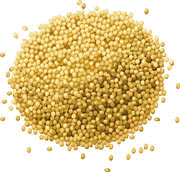International Sorghum and Millet Collaborative Research Support Program (INTSORMIL CRSP)
Date of this Version
8-4-1993
Document Type
Article
Citation
1993 INTSORMIL
Abstract
Sustainable production of food and forage with a focus on plant adaptation to stress environments will be a continued priority for developing countries in the future. Since many areas of the world which support substantial human populations are drought prone, such as the subsaharan African zone and others, the primary focus has been on drought. However, one of the greatest restraints to sustainability of agriculture worldwide is the lack of sufficient soil nutrients for crop growth, or other soil constraints such as acidity or salinity which hinder crop production substantially.
Optimizing soil fertility or amending acid and saline soils to achieve high production is difficult in areas of low economic stability since inputs are costly or quite often technically not feasible. The other obvious alternative to increase stability in stress areas is by genetic improvement of crops. Dr. Donald L. Plucknett, in a recent lecture on science and agricultural transformations, stated that "while not all yield gains in the Green Revolutions can be attributed to plant breeding, it is doubtful such gains would have taken place without the new varieties or hybrids". Development and release of new and improved germplasm is probably the most economic method of technology transfer currently available. According to Dr. Plucknett, most studies indicate about half of yield gains can be attributed to genetic improvements. This statistic is undoubtedly argued in many circles, but regardless of the final figure, gains from genetic improvement are substantial.


